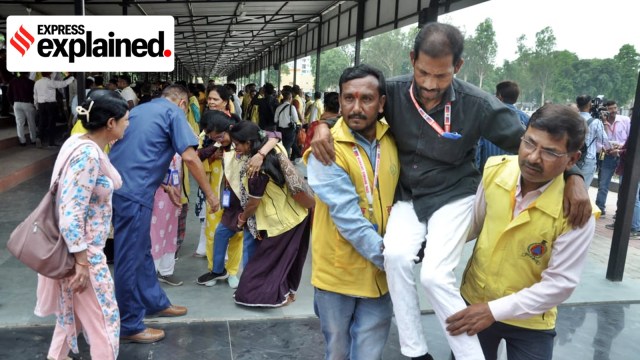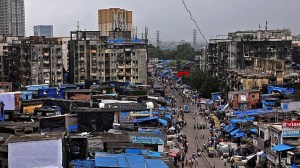Explained: Before the nationwide mock drill tomorrow, here is what civil defence means
Civil defence mock drill India: Civil defence or civil protection is an effort to protect the citizens of a state (generally non-combatants) from military attack. In India, it is defined under the Civil Defence Act of 1968.
 Members of civil defence organisation participating in a rehearsal for the mock drill tomorrow in Lucknow on Tuesday, May 6. (Express photo by Vishal Srivastav)
Members of civil defence organisation participating in a rehearsal for the mock drill tomorrow in Lucknow on Tuesday, May 6. (Express photo by Vishal Srivastav)Civil defence mock drill India Explained: Amid the ongoing tensions between India and Pakistan, the Union Home Ministry on Monday (May 5) wrote to Chief Secretaries of all states and Union Territories on conducting a “Civil Defence Mock Drill” on Wednesday, May 7.
Under the Civil Defence Rules of 1968, the Ministry of Home Affairs has decided to organise a civil defence exercise and rehearsal across 244 categorised as civil defence districts. It is aimed at assessing and enhancing the readiness of civil defence mechanisms across the country.
Here is what to know.
What is civil defence?
World over, civil defence refers to government programs which provide guidance and assistance in preparing for, responding to and recovering from public emergencies due to conflict or natural disasters.
Civil defence or civil protection is an effort to protect the citizens of a state (generally non-combatants) from military attack. It uses the principles of emergency operations: prevention, mitigation, preparation, response, emergency evacuation and recovery.
Under the Civil Defence Act of 1968 in India, civil defence organisations were established to protect individuals, properties, and establishments against any hostile attacks. These are manned by volunteers from different walks of life who are given the necessary training.
In the event of any untoward incidents like flood, earthquake, terror attack, fire, explosion etc., the civil defence organisation would have a corpus of trained employees and volunteers, who can render assistance and relief before the official agencies reach the site. The first few minutes are always crucial to rescue and relief operations.
What prompted India to opt for a formal civil defence unit?
Until the declaration of a national emergency in 1962 (amid the India-China war), the Civil Defence Policy of the Government of India was in place. However, it was confined to making the states and UTs conscious of the need for civil protection measures and to ask them to keep ready civil protection paper plans for major cities and towns. This was under the Emergency Relief Organisation (ERO) Scheme.
The Chinese aggression in 1962 and the India-Pakistan conflict in 1965 led to a rethinking of the policy and scope of civil defence. The Parliament thus passed the Civil Defence Act in May 1968.
The Act has been suitably amended by the Civil Defence (Amendment) Act, 2009, by Notification No. 3 of 2010, to include disaster management as an additional function for the Civil Defence Corps, while retaining its primary role. The additional role in disaster management will be enacted by the Civil Defence Personnel before, during and after emergencies arising out of calamities/disasters, whether natural or man-made.
Where does this apply? What are civil defence districts?
Although the Civil Defence Act is applicable throughout the country, the organisation is only raised in those areas and zones which are tactically and strategically considered vulnerable from an enemy attack perspective.
According to a PTI report, close to 300 “civil defence districts” with sensitive installations like nuclear plants, military bases, refineries, and hydroelectric dams will be covered by mock drills on air-raid warning sirens, civilian training for a “hostile attack” and cleaning of bunkers and trenches.
For instance, in Maharashtra, Mumbai as the financial capital of India and the town of Uran, where the Jawaharlal Nehru Port (JNPT) or the Nhava Sheva Port is located, will see the drills conducted. Tarapur, the site of a nuclear power plant, will also be included.
In Karnataka, Prashant Kumar Thakur, who heads the Home Guards, Civil Defence and the State Disaster Response Force (SDRF), told reporters on Tuesday that the capital, Bengaluru, and the city of Raichur, which has a thermal power plant, will have drills. Another town included in the list is Karwar, which has the Kaiga nuclear power plant.
How do civil defence organisations function? Does they have permanent staff?
Civil defence is primarily organised voluntarily, except for a small nucleus of paid staff and an existing establishment which is augmented during emergencies. The present target of civil defence volunteers is 14.11 lakh, of which 5.38 lakh have already been raised.


- 01
- 02
- 03
- 04
- 05



































